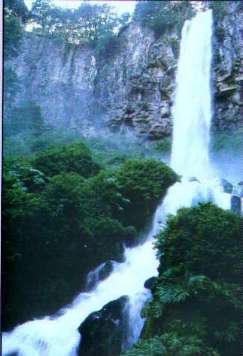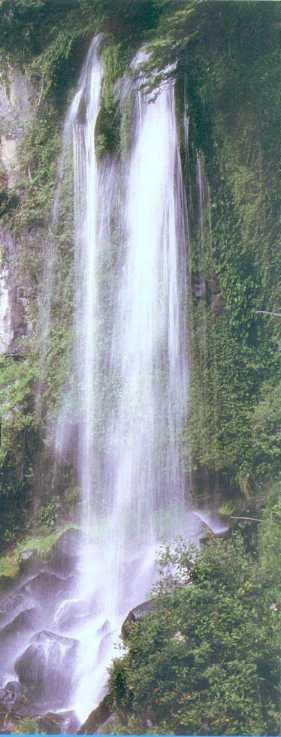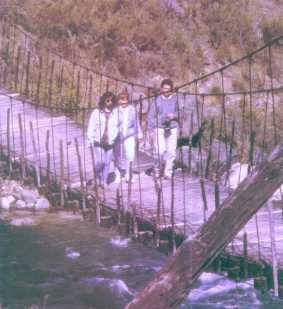
San Martin de los Andes.
Almost hidden in a mountainous range, among lakes and woods within the Lanin National Park, San Martin de los Andes offers its very best to visitors. San Martin was founded on 4th February, 1898, by the Lacar lake and it has certainly become the most widely known tourist center in Neuquen.

There is a great choice of important hotels, hostels, bungalows, restaurants, tea-houses and shops, which, together with its typical architecture, have helped it become clearly distinguishable from any other city. There are lots of spots to be shocked by. Mounts, water-falls, streams, rupestrian paintings, and incredibly beautiful and relaxing woods are just a handful of the whole lot.

The Lacar lake, surrounded by dense vegetation, "pellin" oaks, coihues, and ñires, has many attractive water-activities which will surely make the most of a day in the area. Let alone the breathtaking rafting down the Hua-Hum river!

We shouldn't set aside other delightful places as Quila Quina, Lolog lake and Hua-Hum, along which you can get to Pirihueico through the international path. Fishermen must have surely heard of the Caleufu, Quilquihue and Hermoso rivers in which rewarding browns, rainbow and brook can be caught.

Summertime can be fully enjoyed here, especially if you feel like horse back riding, trekking or practising archery in such a paradise. Winter time in Chapelco also deserves special attention, since the skiing resort provides the tourist with everything he might need.
Junin de los Andes.

Founded in 1.863, it is the oldest town in the province. It is a mixture of quietness, mysticism and folklore backed up by its exceptional beauty. It takes only a few minutes by car to get to the path which leads to Lanin National Park with its world famous fly casting sites in the "Boca del Chimehuin" and Malleo river. From the town itself, tourists can go on excursions to Paimún, Currhué Grande and Chico (Big and Small Currhue) and Epulafquen Thermal Springs, The Escorial and Hueyenthue Valley.

The impressive Lanin volcano (3. 776 m.) is a challenge to both local and foreign climbers, who dream of its exhilarating summit, by its hazarous steep north and south slopes usually covered by a blanket of ice and even snow, depending on the season. Another valuable tip for tourists is an excursion to Huechulafquen and Epulafquen lakes, famous for their crystal clear waters and incredible views you can have of the coastline, neatly bordered by dense forests inhabited by red-deers, foxes, boars, hares, otters and other kinds of animals.

Year by year, a handful of popular events are held in Junin de los Andes, among which "The Rural Festival", "The Provincial Shepherd Festival" and "The Week of The Handicraftmen" stand out. During that whole week, there is a great display of arts and crafts (woodcarving, weaving, looming, etc.). Folk music is played in popular shows and folks (gauchos) gather to share experiences dressed up in their typical garments. As regards lodging and catering, Junin de los Andes provides the tourist with plenty of choices ranging from comfortable hotels to camping sites.
Villa la Angostura.
Villa la Angostura is located just in the heart of "Nahuel Huapi National Park" and it is connected to Quetrihué peninsula right at the entrance of "Los Arrayanes National Park" famous for its unique myrtle forest.

Having developed by the side of two incredibly beautiful lakes such as Nahuel Huapi and Correntoso, many hostels, hotels, bungalows, restaurants, tea houses and so on were built close to them, which helped it become the ideal spot to practise water-sports i.e. windsurfing, sailing, canoeing, cruising, etc.
 | Fishing is a challenge to most fly casting fans who have already heard about trouts caught in the area, especially at Correntoso river mouth, Ragintuco and La Estacada brooks, let alone the Nahuel Huapi north zone for trolleying. Dense forests cover the mountainous hills around with local species of trees, flowers, mushrooms and ferns. Narrow paths in the woods provide you with the chance to enjoy an unforgettable stroll or ride across brooks, up to the breathtaking falls of Inacayal and Bonito river. The mount of "Cerro Bayo " is another important spot due to its panoramic view and its winter sports and entertainment facilities. We should not fail to mention a handful of exhilarating activities to be carried out there, such as hang-gliding, parachuting, mountain bike riding and so on. Getting to the quiet village of "La Angostura" along the "Route of the Seven Lakes" is a fascinating experience. This route takes you to San Martin de los Andes and on the way to Chile, to the international frontier path "Cardenal Samore'': along to Entrelagos and Osorno (both of them, in Chile). |
Focusing on a bit of history back in the village now, we will de able to trace down the pioneers of the place, i.e., the first hotel built by Prime Capraro, as well as the well known "La Asunción" chapel or "Messidor" castle which clearly show the unmistakable details of Bustillo 's architecture.
Villa Traful.
Villa Traful is a fantastic mountain village located just by the Traful lake, within the area of the Nahuel Huapi National Park. It's not only famous for its natural beauty, but for its bungalows and hostels, tea houses and excellent cuisine you can enjoy in this perfect setting.

Apart from the above mentioned facts, Villa Traful is usually referred to as "anglers paradise": In the Traful lake they can find the Landlocked Salmon (Salmo Salar Sebago) one of the rarest species to be found in Argentina.

Referring to water sports, we should not fail to mention that the Traful river offers incredible rapids to kayak and canoe experts. Tourists love going on a boat trip or strolling in the "Submerged Wood": visiting the "Virgins Cave", the waterfall of Coa Co and Blanco streams or The Black and Penitentes Mounts. Undoubtdedly, Fall is the most beautiful season to enjoy there, during which the beauty of landscapes rises to unbelievable heights showing different shades of golden, reddish and bright yellow match the topped white peaks and blue waters.
